How much house do we need? Thoreau, Le Corbusier and the sustainable hut
Following the reflection initiated by Tolstoy in his short story "How much land does a man need?", now Urs Peter Flueckiger, professor at Texas Tech University, takes the reflection to the field of architecture.
In 1886, Leo Tolstoy reflected on blind ambition in his short story How much land does a man need?The main character, the peasant Pajom, was obsessed with increasing his property until he received a Faustian offer to get as much land as he could cover in a single day. Following this story, in How much house do we need? (published by Gustavo Gili with translation by Susana Landrove), the Texas Tech University professor Urs Peter Flueckiger takes the reflection to the field of architecture to question the ever-increasing size of dwellings.
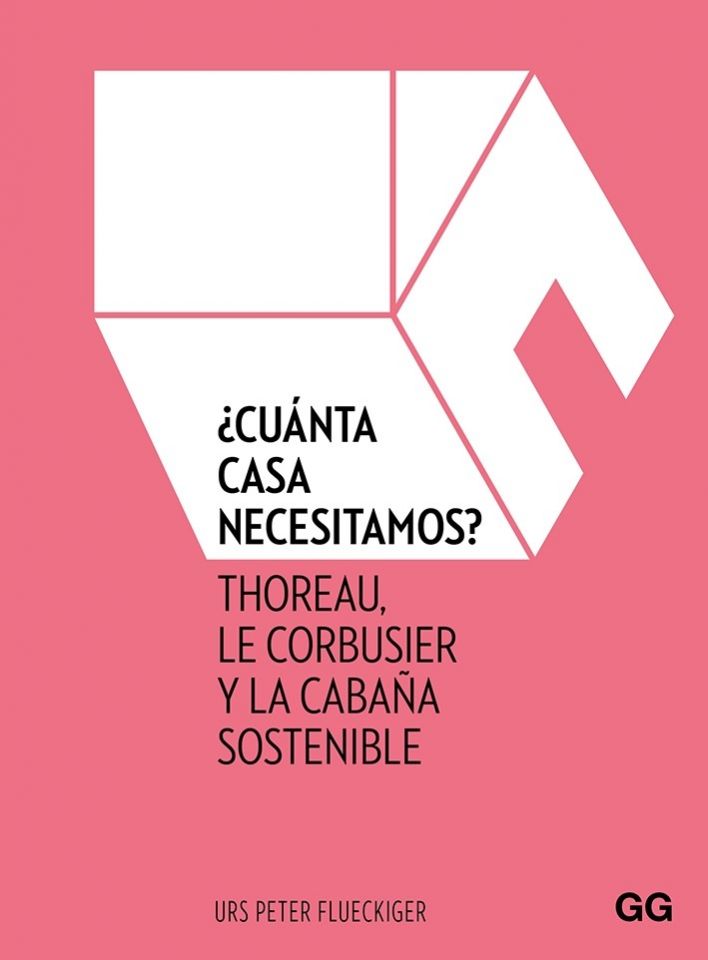
Less is more
In 1950, the average single-family home in the United States was less than 90m2; in 2013 it was 240m2 and with fewer occupants. In Spain, despite the enormous problem of access to housing and the proliferation of #inmofails reported by The ZulistaThe truth is that the average floor area has also been growing and, according to the Ministry of Public Works, stands at 122 m2.
Houses grow and the objects we keep inside grow, in quantity and size. Flueckiger explains that in 1974 the standard television was 19 inches. Last year, the best-selling televisions in Spain were 49 inches, although the greatest growth was concentrated in the 65 and 75-inch sizes, "an escape hatch (...) a metaphor for a place where things are clear and under control, and where we are not overwhelmed by a flood of digital data", says Flueckiger.
Starting with two of the most famous cabins in history - Henry David Thoreau's Walden Pond and Le Cabanon, the log cabin on the Côte d'Azur that Le Corbusier gave his wife - Flueckiger asked his students to build their own, a sustainable cabin on the high plains of West Texas.
Walden Pond by Henry David Thoureau
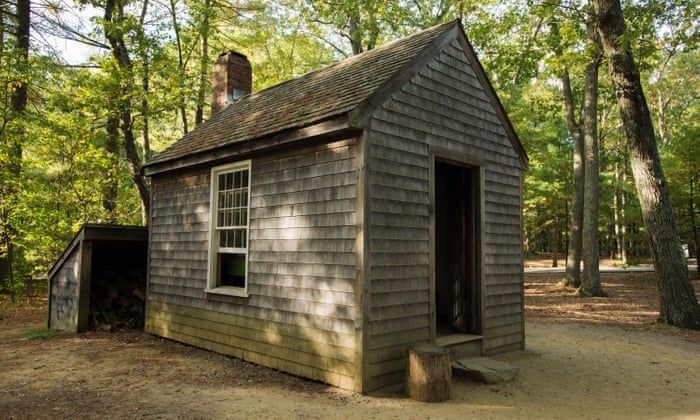
The writer Henry David Thoreau lived in this cabin in Massachusetts from 1845 to 1847. He described it as "a house of firm plank, plastered, 10 feet wide by 15 feet long (three by 4.6 metres), with eight-foot pillars, with dormer and wardrobe, a window on each side, ventilation hatches, door at one end and a brick chimney at the other".. He built it on land owned by his friend Ralph Waldo Emerson and also included a table with the exact cost of the house (about 28 $), including nails, hinges and screws.
During the two years, two months and two days he lived at Walden Pond, Thoureau ate the beans he planted, what he gathered in the woods and what he caught in the lake, although he often went to the neighbouring town of Concord to do laundry and visit friends. It was in that cabin that he wrote his most famous book, Walden or life in the woods (1854).
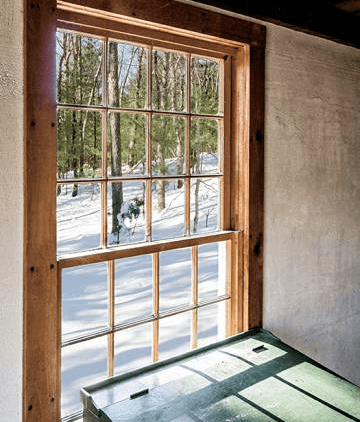
The original cabin no longer exists, only a replica built in the 1980s near the car park of Walden Pond State Preserve; the original site is fenced off with boulders.
Le Cabanon de Le Corbusier
In 1952 Le Corbusier gave his wife a cottage on the Côte d'Azur, the Cabanon, a prefabricated timber-framed building representing "the ideal living space".
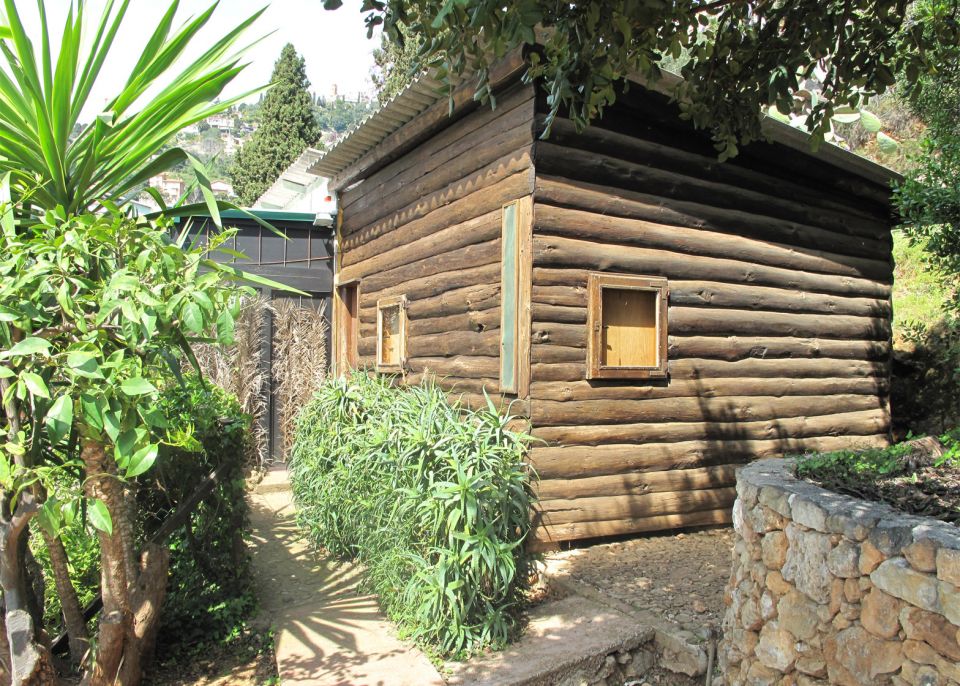
The architect knew the area because his wife, Yvonne, was from a village near Menton and his friend and collaborator, the designer Eileen Grey had his summer home in the area, Villa E-1027. Later, after the war, they frequented a simple restaurant, the Étoile de Mer, and it was at one of its tables that Le Corbusier drew the sketches for the Cabanon, which he built the following year. The restaurant, decorated with numerous paintings by the famous architect, was connected to the cottage by a small door. For more details about this splendid place, read this.
The Cabanon also served him to rigorously apply his central idea, the Modulor, the anthropomorphic scale of proportions present in all his architecture. In his own words: "It's a chateau on the Côte d'Azur. It's 3.66 metres by 3.66 metres and I made it for my wife; it's splendid and inside, extravagantly comfortable and beautiful".

The Cabanon can be visited during the summer months on guided tours by appointment, departing from the Roquebrune-Cap-Martin train station, ten minutes from Monaco.
The student hut at Texas Tech University
Located in the US High Plains, it is prefabricated and eco-designed, 37 m2 and completely energy self-sufficient: it uses rainwater, waste composting, photovoltaic solar energy and a passive solar system. "From an environmental point of view, smaller houses express greater environmental concern than larger ones, regardless of the ecological parameters governing their construction. Global warming will affect us all equally, and larger houses need more resources than smaller ones. If we think about how much house we need and live accordingly, we can all make an active contribution to improving the world we live in.
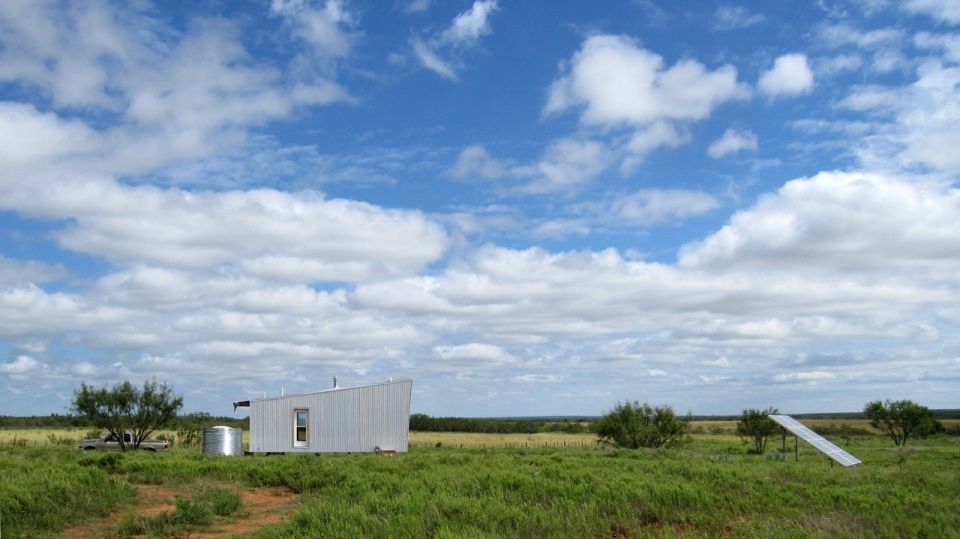
With numerous photographs, plans and models, this book shows that the Walden Pond, Le Cabanon and the Flueckiger team's cabin share the same ideas about minimal space and its relationship with nature. And to give just a few examples, the subject is more topical than ever with the minimalist trend (The Minimalists), the return to the origins (Cabin Porn), the zero waste lifestyle and the environmental crisis (Monapart Madrid recently organised a talk on sustainable housing in the framework of the Open House), for as Thoreau himself pointed out: "What's the use of a house if you don't have a tolerable planet to put it on."
Following the reflection initiated by Tolstoy in his story "How much land does a man need?", now Urs Peter Flueckiger, professor at Texas Tech University, takes the reflection to the field of architecture and shows that Walden Pond, Le Cabanon and the hut designed by his students share the same ideas about minimum space and its relationship with nature.


